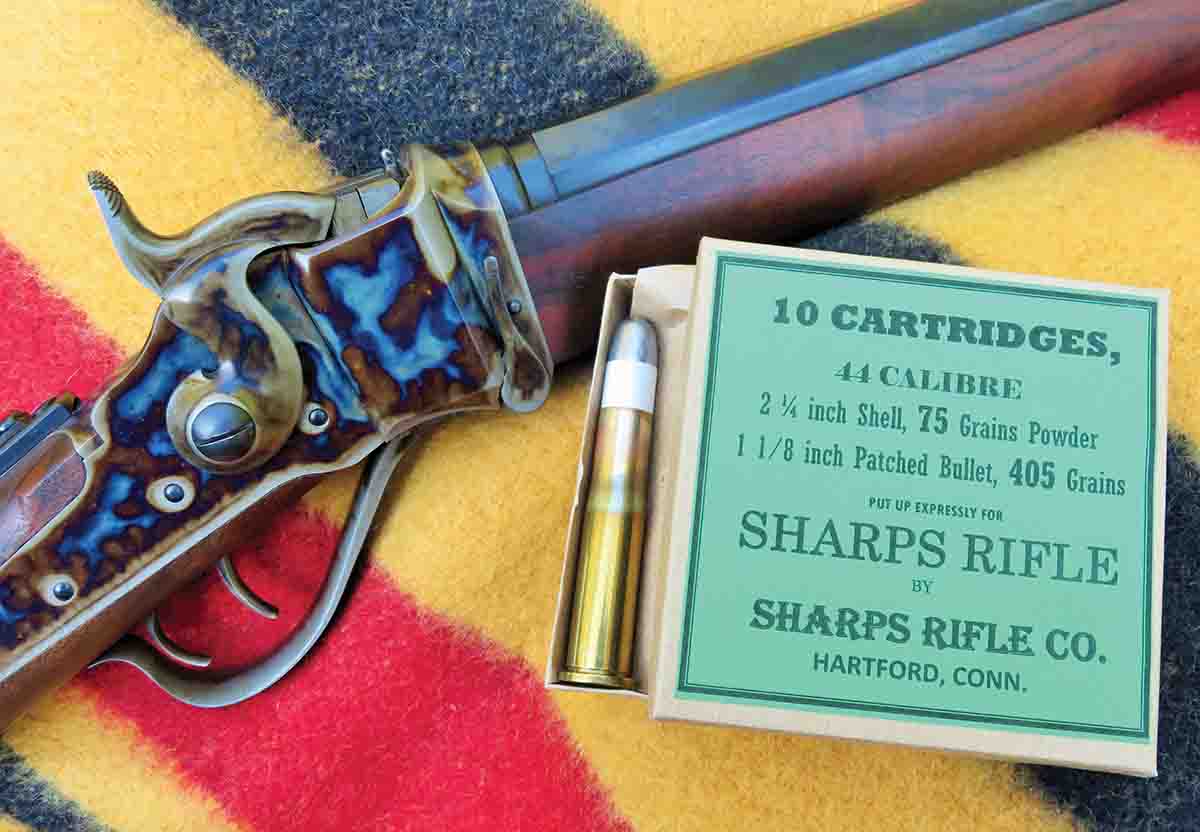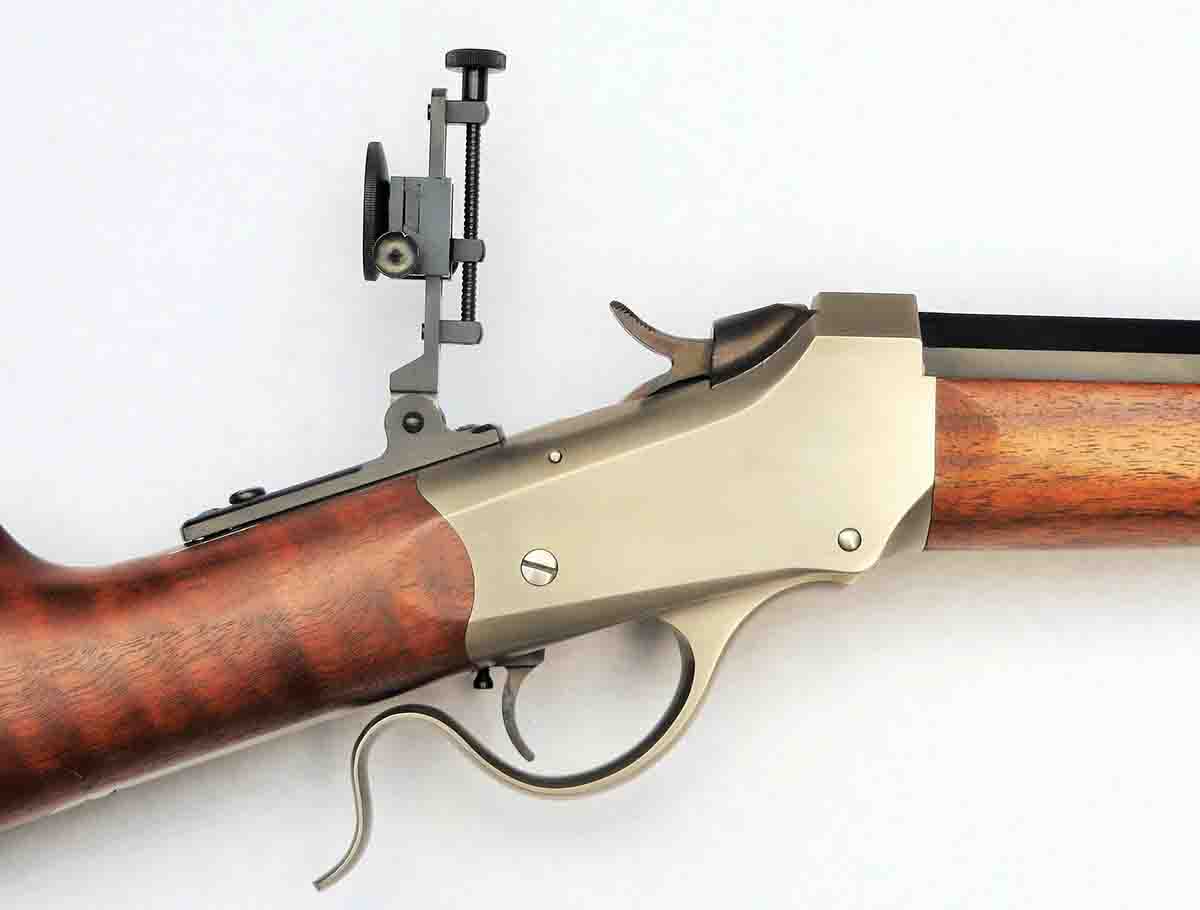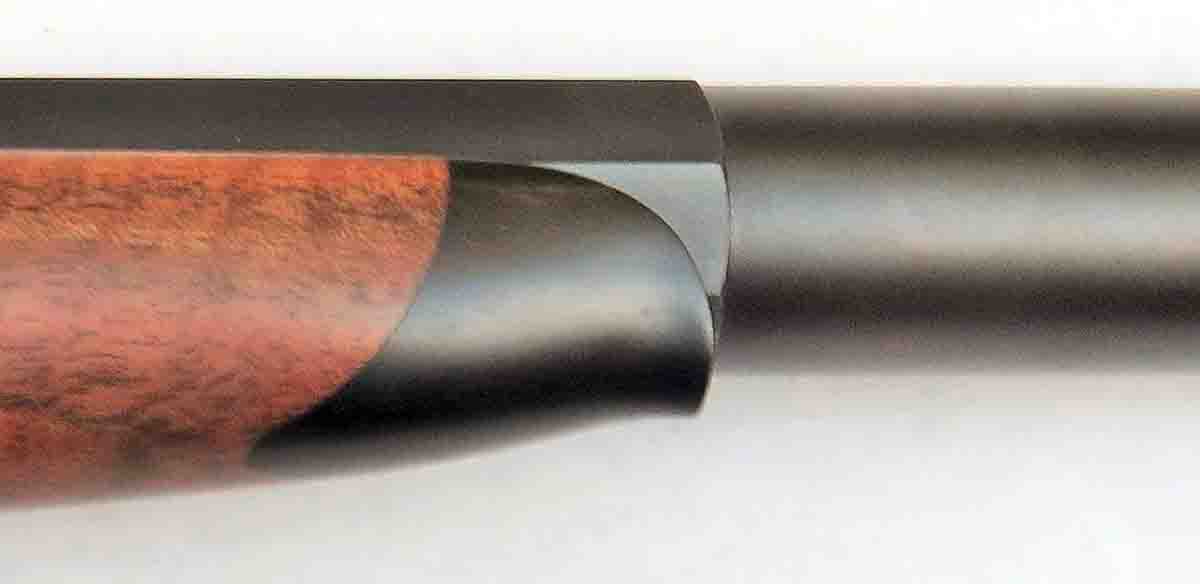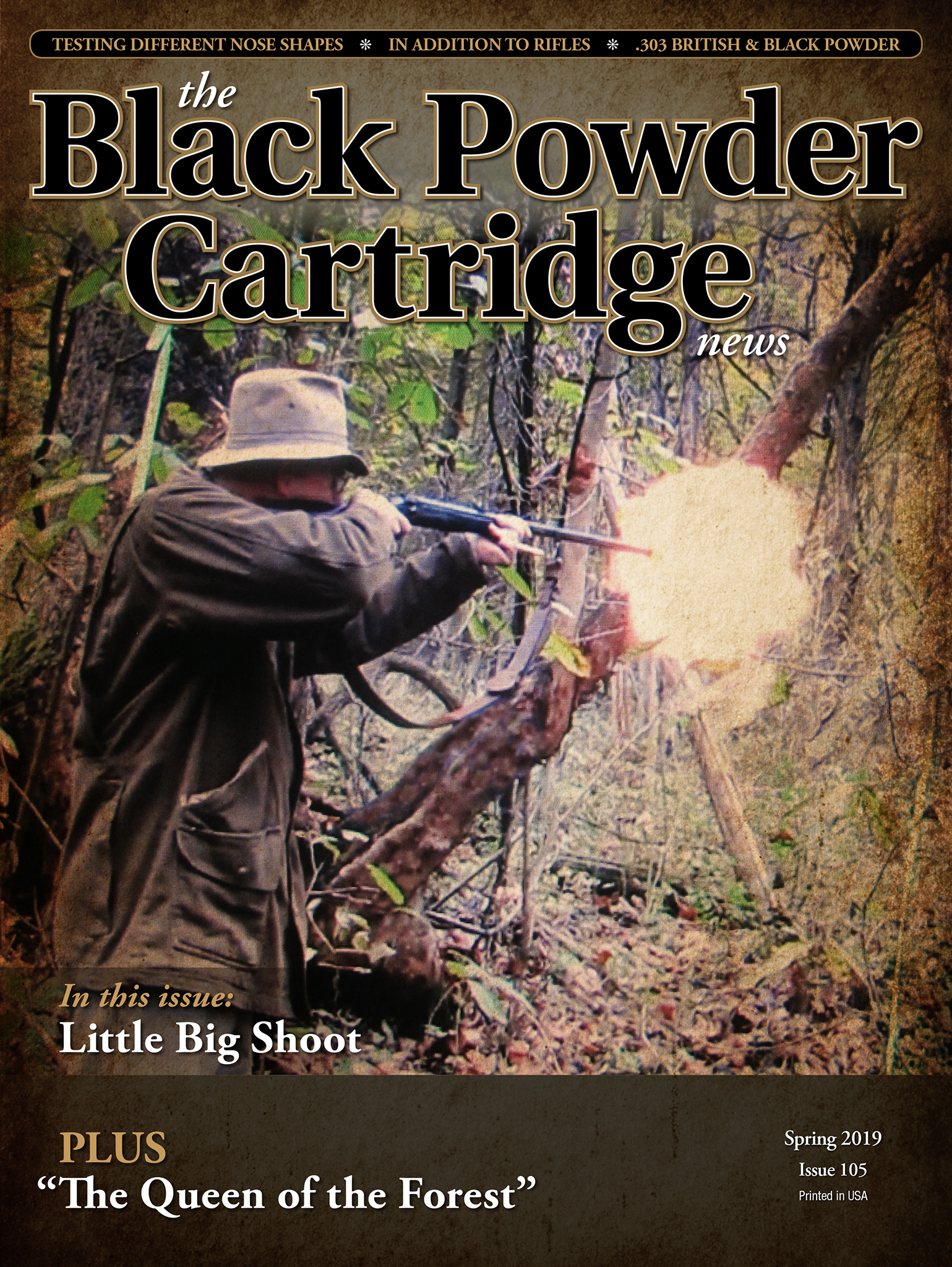In Additiion to
New Rifles
feature By: Mike Nesbitt | April, 19
C. Sharps Arms is well known for making fine new reproductions of the Sharps Models 1874, ’75 and ’77, the Remington Hepburn, plus 1885 High Walls and Low Walls, but the company actually does much more. There is a lot of custom work that also goes on at the C. Sharps Arms shop, including shooter services that are not mentioned in its catalog. Allow me to describe some of these services along with showing some photos of very good examples.

First to be mentioned is that C. Sharps Arms is now doing contouring on rifle barrels. For the rifles produced that means C. Sharps buys barrels as blanks from Green Mountain (just to name one maker) and profiles those barrels in their shop. Doing this allows the company to make a barrel that is accurately contoured to original dimensions, whether an original Sharps rifle is copied, a Remington or a Winchester. For those of us who appreciate authenticity, that’s a real bonus.

Profiling barrels falls into restoration and rebuilding so well that I’ll show a good example of a restoration job that included several of the individual services C. Sharps Arms provides. An old friend of mine found a fine Remington Hepburn that had been previously converted to a varmint rifle in .22 Hornet. The rifle appealed to my pal but not the caliber. So, it was taken to C. Sharps Arms with the idea of rebuilding it back to an authentic caliber, as well as giving it the proper “old-time” profile.
A new barrel was the first thing on the list for this Hepburn and a .40-caliber tube by Green Mountain was selected. It was contoured to become a half-octagonal/half-round barrel, 28-inches long with a weight and size appropriate for a short-range target rifle using the Hepburn action. The caliber selected was the .40-50 Bottleneck.
The barrel was completely contoured, fit and finished before being added to the receiver. Of course, that only mentions the work done to the outside of the barrel. It was chambered for the .40-50 in addition to being fit for the extractor. The outside of the barrel is still mainly what can be seen, and the photos included here of the finished rifle will actually “say” much more than what I can describe.

Custom finishing on rifle actions also needs some discussion here. On the standard rifles made by C. Sharps Arms, the finish on the actions, and usually the steel buttplates, are done by color casehardening; their color case hardening is very good and very colorful. The Remington Rolling Block that I had rebuilt by C. Sharps is a good example. This rifle is in .44-77 and the company did all the metal work after the new barrel was made by Oregon Barrel Company. Don’t blame C. Sharps Arms for the woodwork on this rifle; I did that.

Of course, there are other finishes that can be applied to the actions and hardware of rifles, according to the customer’s tastes. One outstanding finish is called “French Grey” and this is, putting it simply, color casehardening with the colors polished away. The result is an attractive “silver grey” color that reminds one of nickel plating. On hand is one rifle with the French Grey finish on the action and buttplate; that’s my 1885 Low Wall in .44-40. You could say that .44-40 is “right out of the catalog” with specific options, but the French Grey finish is available for finishing custom rifles as well.

A good example of pack hardening without the clear coating can be seen in the pictures of the Hepburn that was commented on previously. Many readers will notice how the noncoated pack hardening looks “older” and therefore is more appropriate for a restored rifle. Either way, pack hardening is a finish on the rifle’s action that many shooters really appreciate.
Prices for these services are available from C. Sharps Arms and because every job can be somewhat different, prices are subject to the specific work ordered. Also, C. Sharps Arms reserves the right to turn down any work; perhaps because they might consider an old rifle unsafe to restore. Contact C. Sharps Arms (406) 932-4353 or info@csharpsarms.com.


